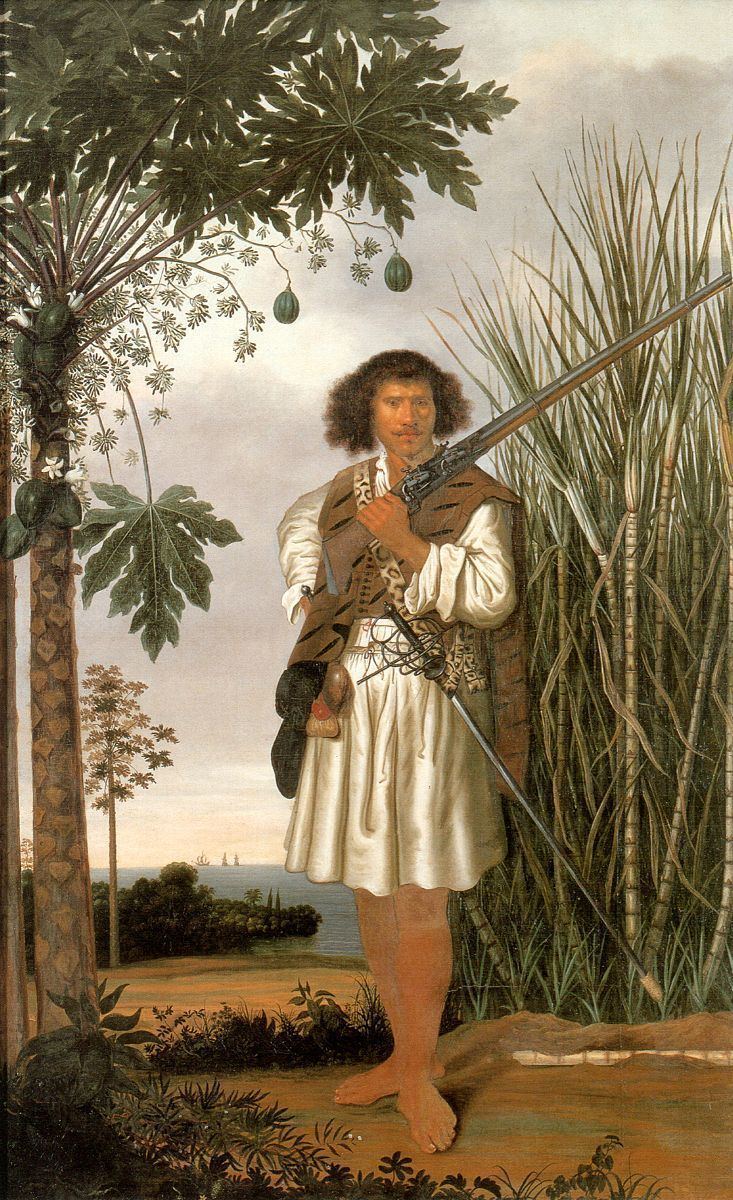 | ||
Mestiço, in Colonial Brazil, the Portuguese-speaking part of Latin America, was initially used to refer to a person with both European and Native South American Amerindian blood only. Later, with both the introduction of African slavery by the Portuguese to Brazil and interracial mixing, other categories began to emerge.
Contents
- Mestio Brazil
- Mestio Angola
- Mestio Guinea Bissau Cape Verde
- Mestio Mozambique
- Mestio So Tom and Prncipe
- Mestios Portuguese India and Portuguese Ceylon
- References
A mulatto was a person with both European and African blood;
A zambo was a person with South American Amerindian and African blood, and pardo evolved to mean a person with blood from all three races. As the Portuguese Empire expanded to Africa and Asia, mestiço came to mean a mixed individual regardless of his racial category. Caboclo has replaced mestiço to refer to an individual who has both European and Amerindian backgrounds.
Mestiço – Brazil
In Brazil, the word mestiço was substituted for "pardo" in the 1890 census, alongside "caboclo" (brown). but then returned to "pardo" in subsequent censuses.
The term was and is used to describe individuals born from any mixture of different ethnicities. Mainly these individuals usually have a blend in African, Native American, and European Caucasian. there are specific groups like - European/Portuguese and Native American parents are commonly known as caboclo or, more commonly in the past, mameluco. Individuals of European and African ancestry are described as mulato. Cafuzos (known as zambo in the English language) are the production of Native American and African ancestors. if someone has a mix of all three they are known as "pardo". Brazil celebrates The Mixed Race Day (Dia do Mestiço) (June 27 is an official date in States of Amazonas) to celebrate racial unity in the nation, Paraíba and Roraima. The Day of the Caboclo (Dia do Caboclo) occurs June 24.
Mestiço – Angola
The Mestiço are primarily of mixed European, native born indigenous Angolan and/or other indigenous African lineages. They tend to be Portuguese culturally and to have full Portuguese names.
Although they make up about 2% of the population, they are the socially elite, and racially privileged, group in the country. Historically, Mestiços formed social and cultural allegiances with Portuguese colonists, subsequently identifying with the Portuguese over and above their indigenous identities. Despite their loyalty, the ethnic group faced economic and political adversity at hands of the white population during times of economic hardship for whites. These actions lead to ostracizing Mestiços from their inherited economic benefits which sparked the group to take a new sociopolitical direction. However, since the over 500 year Portuguese presence in the country, the ethnic group has retained their position of entitlement which is highly evident in the political, economic and cultural hierarchy in present-day Angola. Their phenotype range is broad with a number of members possessing physical characteristics that are close to others within the indigenous black non-mixed population. Since the Mestiços are generally better educated than the rest of the indigenous black population, they exercise influence in government disproportionate to their numbers.
Mestiço – Guinea-Bissau, Cape Verde
In Guinea-Bissau 1% of the population is of mixed African Native and Portuguese descent. In Cape Verde mestiço designated an individual of mixed European and Asian, i.e. Indian, descent.
Mestiço – Mozambique
A minority of the population of Mozambique are of mixed Bantu and Portuguese heritage.
Mestiço – São Tomé and Príncipe
Mestiços of São Tomé and Príncipe are descendants of Portuguese colonists and African slaves brought to Portuguese São Tomé and Príncipe islands during the early years of settlement from modern Benin, Gabon, the Republic of the Congo, the Democratic Republic of the Congo, and Angola (these people also are known as filhos da terra or "children of the land").
Mestiços – Portuguese India and Portuguese Ceylon
In Portugal's colonies in India from the seventeenth century, the term "castiço" came to be applied used for Portuguese persons born in India without any racial mixing, while "mestiço" applied to anyone with any European ancestor, however remote. In Portuguese Ceylon (Sri Lanka), the names Mestiços (Portuguese for "Mixed People") or Casados ("Married") were applied to people of mixed Portuguese and Sri Lankan (Sinhalese and Tamil) descent, starting in the 16th century.
